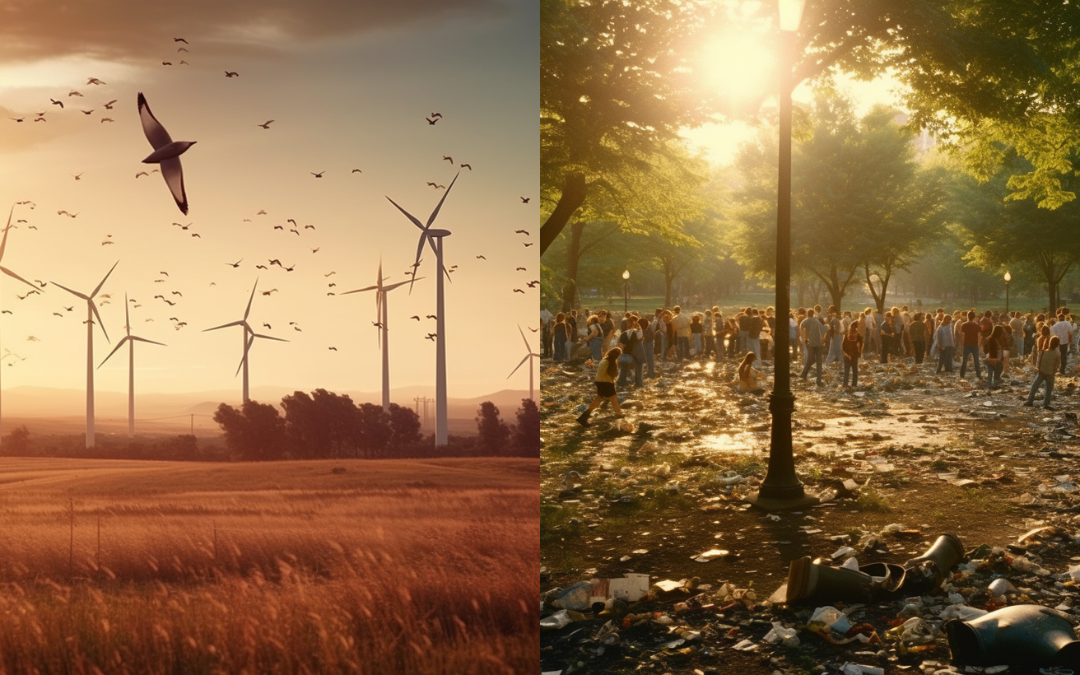In the era of digital transformation, public commenting platforms like SmartComment.com have revolutionized the way we engage with public processes. These platforms provide a space for open dialogue, enabling citizens to voice their opinions on various projects. However, the advent of advanced technologies, such as Generative Adversarial Networks (GANs), has introduced new challenges. This article explores the potential implications of text-to-image technologies on platforms like SmartComment.com and discusses how these technologies can lead to confusion and misdirection.
Understanding GANs and Text-to-Image Synthesis
GANs are a class of artificial intelligence algorithms used in unsupervised machine learning. They were introduced by Ian Goodfellow and his colleagues in 2014. One of their fascinating applications is in text-to-image synthesis, where GANs can generate high-quality images from text descriptions. This technology has been demonstrated in research papers like “Generative Adversarial Text to Image Synthesis” [1].
Real-World Applications and Implications
The practical application of GANs in text-to-image synthesis can be seen on websites like MidJourney [4], which uses AI to turn text into images. Another more dated example is GANPaint Studio [5], an interactive tool that allows users to edit images using GANs. While these applications showcase the potential of GANs, they also highlight the risks associated with their misuse.
The potential for creating false narratives through convincing text-to-image content is a significant concern. A paper titled “The Malicious Use of Artificial Intelligence: Forecasting, Prevention, and Mitigation” [3] discusses this issue in detail. It highlights how AI technologies, including GANs, can be used maliciously, leading to the creation of false narratives.
Impact on Public Commenting Platforms
For public commenting platforms like SmartComment.com, the misuse of text-to-image technologies can lead to confusion and misdirection. For instance, a user could generate an image from a misleading text description, leading to misinformation. This could potentially disrupt the public commenting process, as users may be influenced by what they’re literally seeing with their own two eyes.
Moreover, the ability to generate convincing images from text could be used to create a false sense of consensus which in turn manipulates public opinion. This could undermine the integrity of the public commenting process, which relies on transparency and authenticity.
The Role of Text-to-Image Technology in Shaping Public Opinion on a Wind Farm Project
Wondering what this looks like? In the context of an environmental project, such as a proposed wind farm, public commenting platforms like SmartComment.com are often used to gather public opinion. Let’s imagine a scenario where a user, John, decides to use text-to-image technology to influence public opinion.
John is opposed to the wind farm project. He believes it will disrupt the local bird population. However, instead of simply stating his opinion, he decides to use a GAN-based text-to-image tool to create an image that he believes will have a more significant impact. He inputs a text description: “A wind farm with hundreds of wind turbines in a field, with numerous birds colliding with the turbines.”
The GAN tool generates a highly realistic image based on John’s description. The image is disturbing, showing birds in mid-flight colliding with the wind turbines. John then posts this image on the public commenting platform along with a comment expressing his concern about the wind farm’s impact on local bird populations.
The image, due to its graphic nature, quickly gains attention. Other users, influenced by the image, start expressing their concerns about the project, even though the image is not a factual representation but a generated one based on John’s input.
In this scenario, the text-to-image technology has been used to create a false narrative that could potentially influence public opinion about the wind farm project. It demonstrates the power of such technology and the need for public commenting platforms to be aware of its potential misuse.
Another, shorter example
It’s easy to get sidetracked by what seems like a specific set of criteria under which this sort of manipulation can be made. But the use cases are seemingly infinite. Let’s imagine a scenario where a city is planning to develop an urban park. On the public commenting platform, SmartComment.com, a user who opposes the project uses a text-to-image tool to create an image that depicts the proposed park as a crowded, noisy, and littered space, contrary to the serene and green space proposed by the city.
The user inputs a text description: “A crowded urban park filled with litter and noise.” The GAN tool generates a realistic image based on this description, which the user then posts on the platform along with a comment expressing their concerns about potential noise and litter issues.
The image, despite being artificially generated, could potentially sway public opinion by creating a negative perception of the proposed park, demonstrating the potential misuse of text-to-image technology in influencing public opinion.
Mitigation Strategies
To mitigate these risks, it’s crucial for platforms like SmartComment.com to implement robust moderation policies and use advanced AI tools for content moderation. Additionally, educating users about the potential misuse of text-to-image technologies can help raise awareness and prevent the spread of misinformation.
Conclusion
While text-to-image technologies offer exciting possibilities, their potential misuse poses significant challenges for public commenting platforms. As we continue to navigate the digital landscape, platforms like SmartComment.com must remain vigilant and proactive in addressing these challenges to ensure the integrity of public engagement.
References: [1] Generative Adversarial Text to Image Synthesis – arXiv [2] GANs in AI: A Comprehensive Survey – MDPI [3] The Malicious Use of Artificial Intelligence: Forecasting, Prevention, and Mitigation – arXiv [4] MidJourney [5] GANPaint Studio

